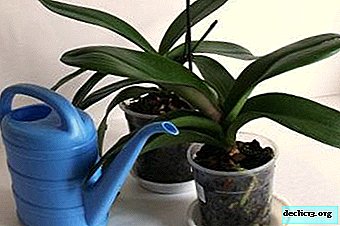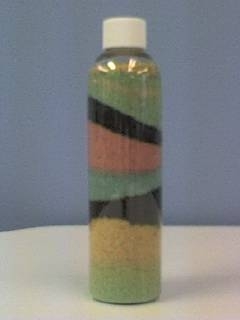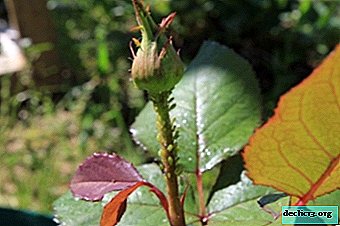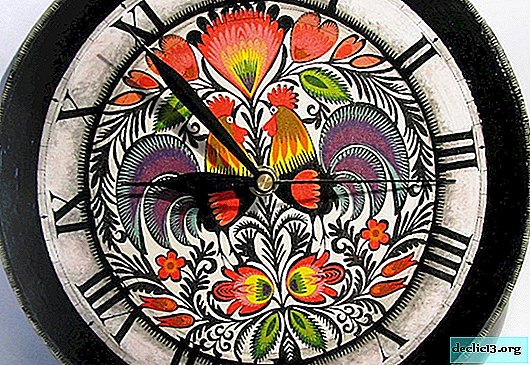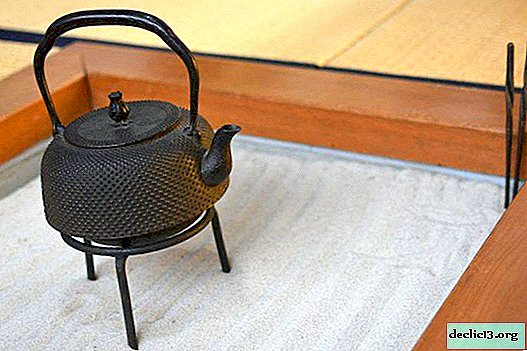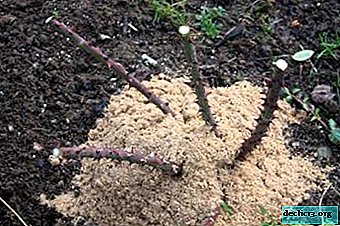Beauty orchid Zygopetalum - subsort and care rules
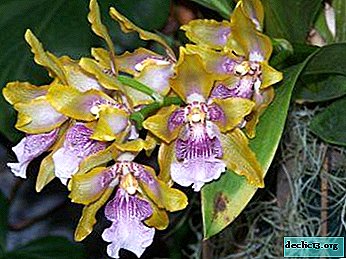
Zygopetalum orchid, an American beauty, is unpretentious, it gets along well in our conditions, it is very light and beautiful, it is so easy to cope with it!
It blooms quite large and bright. What colors you will not meet: gently - white, cherry, there are also colorful stars, with patterns and fantastic dots. A real festive rainbow flower bed! Today we will tell about the history of the origin of zygopetalum, its subsorts and the rules for caring for this beautiful flower.
Brief definition
ATTENTION: Zygopetalum Lucendorf - this genus is from a large family of orchid, but not as common as most orchids, there are about 20 species in total.They can be terrestrial and epiphytes, lithophytes, that is, they grow in gorges of rocks, on stones, in tropical forests. Homeland - South America, Mexico, the wet forests of Brazil, Peru.
Detailed description
 Unusual structure of the flower itself - the petals grow together at the base of the column. The orchid is large, fragrant flowers, have a thick aroma. Especially fragrant flowers in the early morning.
Unusual structure of the flower itself - the petals grow together at the base of the column. The orchid is large, fragrant flowers, have a thick aroma. Especially fragrant flowers in the early morning.
The length of the shoots reaches half a meter. Sympodial type of growth. The creeping shoot resembles a ladder, with each "step" gradually rising above the soil. The root system is compacted: white, thick roots.
Pseudobulbs are oblong, shortened, smooth, bright green, have an oval shape. They are in a kind of nest from the lower leaves, which die over time. Usually bear several flowers. With growth and development, each pseudobulb grows slightly higher than the previous one.
The leaves are shiny, pointed, wide, leathery, as if covered with gloss, like a knife - a lancet. They have longitudinal veins.
The flowers are bright: purple, white, green, pointed petals are similar to starfish. Inflorescences resemble rare brushes. They can have a single color, and can be full of spots and a variety of patterns. The lip as a bright brush stroke of the artist’s brush contrasts with the background of the flower itself.
History of occurrence
Zygopetulum orchid is a literal translation from Greek - “paired”, “yoke” and “petal”. Her ancestors arrived in our gardens and greenhouses from South America. Today, hybrids of this fragrant flower are available to all Europeans, they are easy to care for, not whimsical, they require living conditions close to the conditions of their historical homeland.
What is the difference from the other varieties?
Zigopetalum orchid does not tolerate "drying" of the soil at all, which is practiced when caring for orchids of other species. The roots of this particular orchid do not have a protective layer of roots, which is able to retain moisture in the substrate.
IMPORTANT: When the substrate dries, the zygopetalum orchid will die.Subcort
There are very few "sources" of zygopetalum, in flower shops you can buy hybrids of these orchids, consider the brightest of them.
Amazonica

The most delicate variety of zygopetalum. The flowers themselves are snow-white, the lip is marked with bright purple stripes, this adds brightness and contrast to the entire orchid. The leaves are light green, fragile, sophisticated, grow a beautiful fan, up to 20 cm in length. The fragrance of the Amazonica orchid is magnificent and lasting..
Lindeniae

A funny mottled star, blooms in spring and summer, flowers grow up to 8 cm. The petals themselves are raised up, light green in color with light brown stripes, but the lip amusingly stands out with unusual purple stripes on a bright white background. This zygopetalum is special, its creeping rhizome is grown in wide pots. The leaves are bright, pointed, grow up to 30 cm.
Bloom
When and how?
Zygopetalums with proper care at home can bloom 2 times a yearat any time. Most often, flowering begins in autumn or winter. It blooms fairly long 1.5 - 2 months. During flowering, observe the shaded arrangement of orchids, flowers in penumbra last longer.
Care before and after
Before flowering, the peduncle in Zygopetalum develops with an unformed pseudobulb. The rest period usually passes unnoticed when the pseudobulbs are already ripe.
TIP: It is better to lower the air temperature at this moment, reduce watering to reduce soil and air humidity. The desired air temperature is up to 20 ° C, and the humidity is moderate, at least 60%.What to do if it does not blossom?
If the pseudobulb has already matured, but the peduncle has not appeared, then do not wait for flowering. To "stimulate" an orchid for flowering, it is necessary to reduce watering. A temperature difference of 3 - 5 ° C must be mandatory.
Step-by-step instructions for growing
Seat selection
Zygopetalum orchid loves partial shade, therefore pots are usually located on the western or eastern side. If this is not possible, then for the northern location it is recommended to use a light backlight, and the southern windows must be tinted.
Soil and pot preparation
Zigopetalum substrate requires a special, water-resistant:
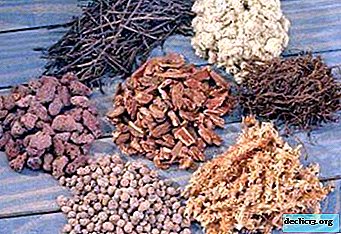 Well drainage from expanded clay, pebbles, polystyrene.
Well drainage from expanded clay, pebbles, polystyrene.- Small pieces of pine bark.
- Peat.
- Moss - sphagnum to retain moisture.
Also suitable is a substrate containing humus:
- Middle pieces of pine bark.
- Moss - Sphagnum.
- Sod land.
- Peat.
- Mullein.
- Dry leaves.
- The drainage layer consists of expanded clay or clay shards.
For growing orchids, it is preferable to use plastic pots.. The roots grow strongly, clinging to the surface of the pot, and can be damaged during transplantation. And for ventilation on the side surface in a plastic pot, it is easier to make small holes.
You can use wooden rack baskets or other wooden boxes.
Temperature
The temperature regime for the zygopetalum orchid should be moderate:
- Summertime is 23 - 25 ° C during the day and up to 18 ° C at night.
- Autumn and winter - 18 - 23 ° C during the day, at night up to 15 ° C.
Temperature limits should be followed throughout the year.. In the warm season, from spring to early autumn, to night frosts, this orchid can be kept outdoors - in the garden, on the loggia or on the open balcony. Thus, the patient zygopetalum will receive a natural day and night temperature regime with the necessary differences.
Humidity
The required air humidity is quite high - 70 - 90%, in dry weather not less than 60% humidity. High humidity and good circulation are the key to the healthy development and growth of zygopetalum.
Spraying and additional trays with wet pebbles can not always maintain the necessary humidity. It is better to purchase special artificial humidifiers, steam generators for this orchid..
Lighting
Avoid the bright direct sun to avoid dangerous burns on orchid leaves. For zygopetalum, soft diffused light is needed. It is better to shade the windows with white paper, a curtain or install pots away from window sills.
If the leaves are a light green color, then the orchid receives sufficient lighting. If the leaves are darkened, you need to add backlight, especially in winter.
Watering
 Zygopetalum orchids love watering. In summer, watering should be more intense, at this time it is better to add irrigation - spraying and additional moisture - install the pots on a pallet with wet pebbles, put saucers with water near the pots. Florists recommend using a warm shower 2 times a month.
Zygopetalum orchids love watering. In summer, watering should be more intense, at this time it is better to add irrigation - spraying and additional moisture - install the pots on a pallet with wet pebbles, put saucers with water near the pots. Florists recommend using a warm shower 2 times a month.
When spraying water on the flowers themselves should not fall, they can become stained.
Watering is usually done in the morning. In winter, watering is reduced, but you need to monitor the substrate, it should not dry out.
Beware of getting water on young sprouts and sinuses of leaves. Rot may appear. After showering, carefully wipe the leaf sinuses and the outlet itself with a cotton swab.
Water should only be purified, filtered, settled or boiled.. Melted snow or rainwater is also useful. It is impossible to dry the soil, but it is also impossible to fill in the zygopetalum. The substrate should be wet constantly, but it should not stick together.
Watering method - immersing the pot in a bucket for 20 minutes until completely saturated with moisture. Then it is necessary to allow excess water to drain into the pan, which is subsequently drained.
Watch a video about proper orchid watering:
Top dressing
Combine fertilizer with watering. In summer - 2 times a week, in winter it is enough to feed the orchid 1 time per month. During the growth period, fertilizers with nitrogen are used; when flowering, it is better to fertilize with potassium and phosphorus.
Zygopetalum is capricious of excessive artificial feeding, you can destroy the roots. Carefully read the instructions, observe the dose of fertilizer.
For additional fertilizer, you can use spraying with a weak concentration of fertilizer.
Watch the video about the proper feeding of orchids:
Transfer
If the root has grown greatly, it has become crowded, airy roots "creep" over the pot, you need to transplant an orchid. If the substrate begins to decompose, dries poorly, absorbs a lot of water, a transplant is needed, otherwise the roots may rot.
We transplant every 2-3 years, preferably in the spring, when the shoots have just begun to grow. If buds have already appeared, a transplant is best done after the orchid has bloomed.
The procedure is simple:
- With clean, processed tools, we clean old dead and decayed roots.
- The place of cut is better to disinfect with charcoal.
- We also remove dried pseudobulbs.
- We leave green pseudobulbs, they preserve the supply of necessary nutrients, this will support the orchid during adaptation.
Watch the video about the correct transplantation of zygopetalum orchids:
How to propagate?
We propagate the orchid by dividing:
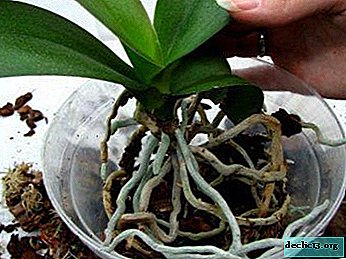 First we clean the roots of dry, infected parts, the old substrate.
First we clean the roots of dry, infected parts, the old substrate.- We divide the updated orchid into several parts.
- Each part should have 2 to 3 sprouts.
- These sprouts are determined in moss-sphagnum for ripening in a special place, it is possible in an aquarium.
- Water often.
- Each matured part with well-developed pseudobulbs is carefully moved into a pot with a substrate.
- For the prevention of rot, the roots are treated with charcoal.
Watch the video about the propagation of orchids by dividing the bush (sockets):
Diseases and Pests
The most common pests of zygopetalum orchids:
- Spider mite. Signs of damage: white spots appear on the leaves below, then they become a grayish-brown color. A thin cobweb around the stems. A simple procedure with a warm shower will help to cope with this disease. Repeat the procedure 2 to 3 times. You can use actofit or fitoverm. 3 times with an interval of 1 to 2 weeks, we process the leaves with a solution: 1 g of the drug per liter of water.
- Snails and slugs usually attack the leaves of the flower, holes remain on them. From pests, silver tracks remain - traces. By immersing zygopetalum in water, snails appear on the substrate, they need to be collected. The drug mesurol is also used, 1 time in 3 weeks.
- Rot occurs with improper watering. Watering must be stopped, the substrate dried. It is advisable to transplant an orchid, brushing the roots from decayed processes. Use fungicide to treat infected areas.
Prevention of various problems
- Regular and proper watering, transplanting, fertilizer, top dressing are the main conditions for prevention.
- An excess of light leads to the development of peduncles and a delay in the growth of pseudobulbs, as a result, the sprouts will be unsuitable for flowering.
- If the zygopetalum does not receive light in the right amount all the time, do not wait for flowering. The flower stalk dies, flower buds die.
- For the prevention of rot, scale insects and other fungal diseases, flower growers recommend wiping the orchid with a weak solution of coniferous extract: 20 g of funds per liter of water.
Conclusion
Observing all the recommendations for caring for this marvelous flower, protecting it from all troubles and diseases, you will receive a generous reward - a cheerful festive atmosphere in your home and a sweet honey inimitable aroma.

 Well drainage from expanded clay, pebbles, polystyrene.
Well drainage from expanded clay, pebbles, polystyrene. First we clean the roots of dry, infected parts, the old substrate.
First we clean the roots of dry, infected parts, the old substrate.